This new module helps you understand data exchanges in your instance powered by Perspectium. On this page, you'll find everything you need to know about installing the dashboard and what features are included.
NOTE: The dashboard is available only with the Perspectium Core Helium update set, so make sure you have that installed first. To request the latest update set, contact Perspectium Support.
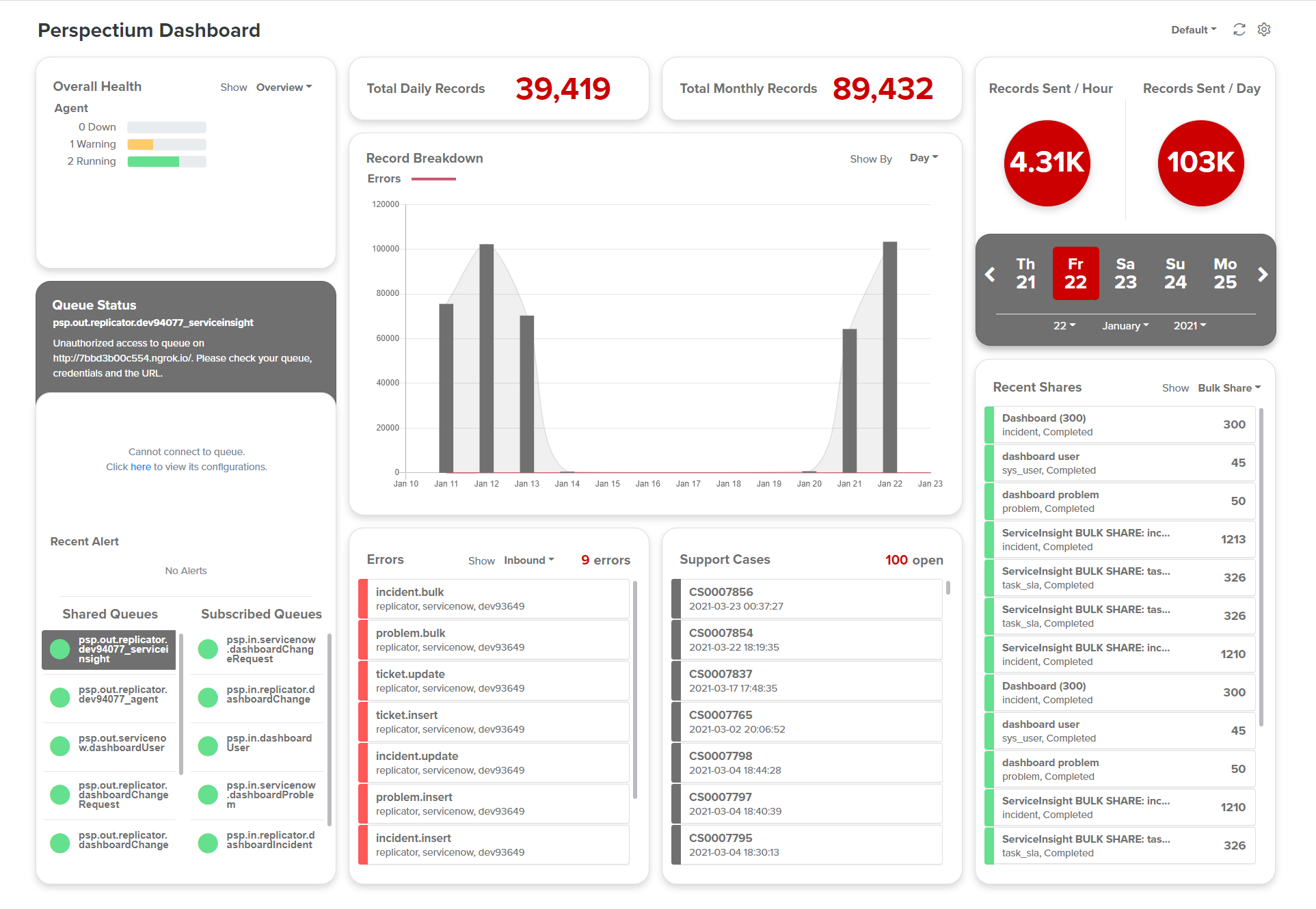
Follow these instructions to install the dashboard feature. If you have completed any of the below steps, simply skip to the next step.
- Install the latest Perspectium Core Helium update set (if you haven't already).
- Go to the Perspectium > Control and Configuration > Finish Install and click Confirm. This will prevent preview errors when the Perspectium Dashboard update set is committed.
- Install the latest Perspectium Dashboard Helium update set. Note you can also install the Perspectium Dashboard Helium update to an existing instance, but if so, you must run Perspectium Finish Install afterwards.
To access your dashboard, go to Perspectium Core > Dashboard
In order for the dashboard to display data, you need to first share some data from either bulk or dynamic shares. If your instance does not have any previously-shared data, simply run a few bulk or dynamic shares in order to generate some data to view.
Here's a breakdown of all of the features available on your dashboard.
NOTE: This feature is only functional using an Integration Mesh with version 4.6.12+. Contact Perspectium Support if you have any questions about this feature or the version of the Integration Mesh your instance is connected to.
In order to active this feature, follow these instructions:
- Download and install any version of the DataSync Agent
- Set up the Agent to connect to the same Integration Mesh credentials as the Perspectium application on your ServiceNow instance
- Start/use the Agent which automatically start sending in heartbeats
Once this is set, the scheduled job will run every 10 minutes and automatically request heartbeats. You can install and run multiple independent agents.
Agent Status Descriptions:
Running: last heartbeat received is less than or equal to 30 minutes ago
Warning: last heartbeat received is greater than 30 minutes but less than 60 minutes ago
Down: last heartbeat received is greater than 60 minutes ago
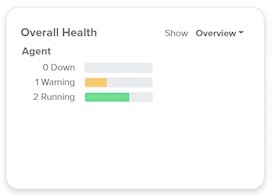
On Finish Install after installing the Dashboard, Monitor and Track History will be enabled for all existing queues to track and show queue data in the dashboard. This is controlled by a PSP property in the Properties > Dashboard Properties module. You can change options for this feature as follows:
To disable/enable the Monitor and Track History for all queues:
- Go to Perspectium > Properties > Dashboard Properties
- Uncheck or check the Enable Track History for all queues (necessary for Perspectium Dashboard queue display) property
- Click Save
Note: You may be asked to fill in your Perspectium portal username and password in order to save. - Go to the Shared/Subscribed Queues module and observe how existing queues are updated based on the property value saved
To create a new queue when the Enable Track History property is ON:
- Go to the Shared/Subscribed Queues module
- Click New
- Confirm that Monitor and Track History are enabled on the form
Note: When Enable Track History is off, the new queue record form does not have Monitor and Track History on automatically
To uncheck Monitor and/or Track History on a queue form when Enable Track History is ON:
- Go to the Shared/Subscribed Queues module
- Click New or click on an existing queue
- Confirm that Monitor and Track History are enabled on the form
- Uncheck the Monitor and/or Track History checkboxes
Note: You should see an info message to let you know that it's important to have these checked, since they are necessary to properly display Queue Status on your dashboard.

The Queue History table (u_psp_queue_history) stores the queue data shown in the dashboard and is rotated to minimize performance issues on your instance. The default rotation is set up for 8 rotations of 2 days each (16 days total of queue history data). You can adjust the rotation settings to change how much data is saved in this table and subsequently shown on the dashboard.
Total Daily Records: Displays the total record shares for the current day.
Total Monthly Records: Displays the total record shares for the current month.
NOTE: Changing the date/month on the calendar does not affect this count.

Use this feature to get a breakdown of the number of records sent based on a selected date in the calendar.
Any time you access or reload the dashboard, the calendar date will reset to the current date.
You can change the date on the calendar using the available arrows or the dropdown settings.
The Records Sent/Day count reflects the number of records sent on the specific calendar date selected.
The Records Sent/Hour count is reflects the number of records sent in the the specific calendar date selected, divided by 24 hours. However, if the current date is selected, then this number is divided by the number of hours that have passed in that day so far.
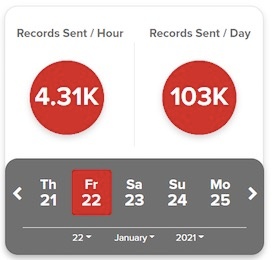
The Record Breakdown graph is a visualization of data based on the calendar date selected. It reflects both dynamic and bulk shares. Toggle between different data representation (records per hour, day, month, or lifetime).
NOTE: Shares from additional related tables selected on a dynamic or bulk share (such as selecting the include attachments or include journal fields options) are not counted in the overall share count displayed on the dashboard. This includes additional shares from tables such as sys_attachment, sys_journal, and sys_audit.
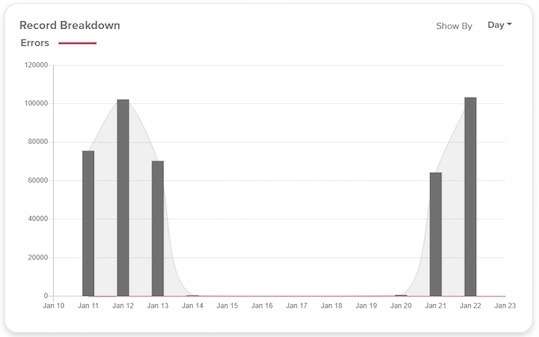
This feature displays the most recent (up to 50) dynamic/bulk shares from you instance. You can click on any entry to access that specific record directly.
NOTE: Shares from additional tables are not counted in the overall share count displayed on the dashboard. This includes additional shares from tables such as sys_attachment, sys_journal, and sys_audit.
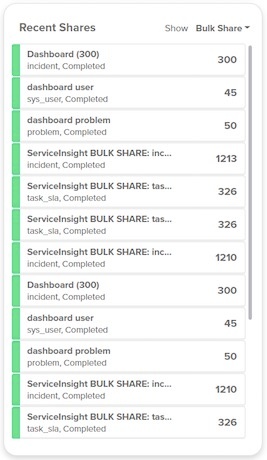
This feature displays the most recent inbound, outbound, and receipt messages that have an Error state. Click on any entry to access that message directly.
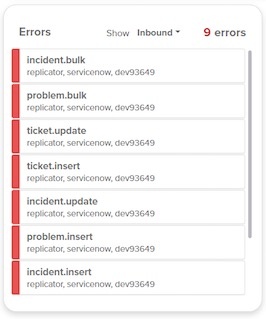
This feature displays your company's most recent display support cases with Perspectium. Access to the Perspectium Portal is required to view support cases directly. If you don't have credentials to your portal, contact Perspectium Support.
In order to access Perspectium Portal support cases:
- Go to Perspectium > Control and Configuration > Properties > Dashboard Settings
- Enter your Perspectium Portal username to access the Perspectium Portal
- Enter the Perspectium Portal password associated with your username
- Click Save
Once this is configured, refresh or revisit your dashboard to view the support cases. You can also access them via Perspectium > Perspectium Core > Dashboard.
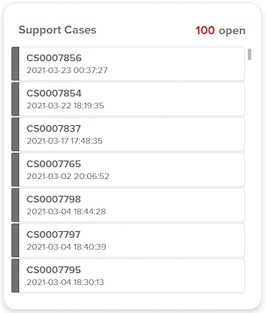
NOTE: Once Perspectium Portal credentials are inputted and saved into the Dashboard Settings, an API request is made to the Perspectium Portal to request an OAuth2 access token to access your support cases. If the Perspectium Portal credentials are valid, the token is saved into the Perspectium properties. This OAuth2 token will be used to view support cases on the dashboard. This API access to the Portal does not require any additional configuration on your ServiceNow instance.
The OAuth2 token is only valid for 24 hours, after which the system will automatically fetch a new token. If the token has been changed, the app will retry a maximum of 3 times to request a new OAuth2 token.
The Perspectium Dashboard Data scheduled job creates the instancedaily payload used to retrieve updated queue and recent shares information. This will run periodically every 5 minutes.